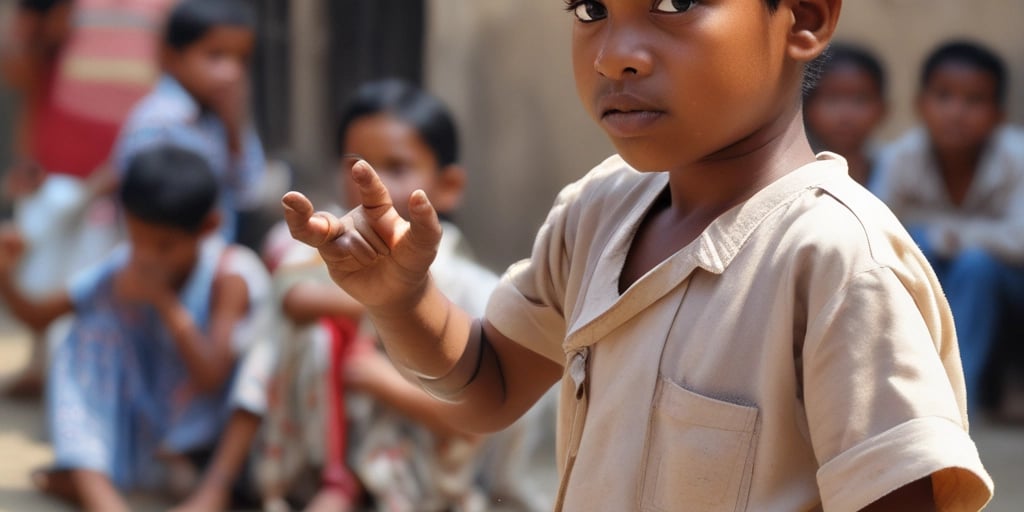JUVENILE CRIMES IN INDIA


INTRODUCTION
Juvenile crime, frequently appertained to as juvenile delinquency, is one of India’s most serious social issues. The term “juvenile delinquents” or “children in conflict with the law” denotes individualities under the age of 18 who be in touch with the justice system due to alleged felonious conditioning. colorful factors, similar as maternal drunkenness, poverty, family breakdowns, and vituperative home conditions, contribute to their involvement in crimes.
This issue transcends borders, affects societies encyclopedically, and is honored as a social wrong hindering youth eventuality. Understanding the root causes of juvenile delinquency is critical to precluding its circumstance and intermediating effectively. The Indian Juvenile Justice System is guided by the Juvenile Justice (Care and Protection of Children) Act, 2015, which emphasizes care and recuperation over discipline. still, the perpetration of this progressive legislation varies significantly across countries, leading to difference in juvenile treatment and recuperation.
Despite these progressive legal fabric perpetration remains inconsistent across colorful States and homes, leading to difference in Juvenile treatment and recuperation In India, juvenile crime is a grim reality. A juvenile is a child who has not reached the age at which they may be held responsible for their felonious conditioning in the same way that a grown-up can. When pertaining to a youthful felonious lawbreaker, the term juvenile is used. As a result, a juvenile is a child who is indicted of doing certain acts or deletions that are illegal and have been classified as similar by correctional laws. kids have lately been proven to be involved in the most terrible crimes, similar as murder and gang rape. Although the causes of felonious conduct in children are complicated, delinquency is reasonably foreseeable beforehand in the lives of certain youth numerous experts feel that the current law is inadequate to manage with the problem and that it be changed so that minors can be fulfilled and doomed as grown-ups for severe crimes. still, there are opposing shoes that doesn’t take part in this study. This composition aims to bandy juvenile crimes in the Indian environment.
JUVENILE JUSTICE ACT: AN OVERVIEW
Before 1960, India had no harmonious age limit for juvenile delinquents. Each state had its own Children Act, with different delineations for children. The Bombay Children Act 1948 defined a child as a boy under 16 times old, while the U.P Children Act defined a person under 16. India came a signatory to the UN protestation on Children’s Rights in 1959 and passed the Children Act 1960 in 1960. still, due to the Standard Minimum Rules for Juvenile Justice espoused by UN countries in 1985, India has re-enactment the Children Act 1960 and introduce the Juvenile Justice Act 1986. The United Nations espoused a convention on child rights in 1989, defining a child as a mortal being below 18 times old.
Juvenile Justice is pivotal for children, as they are born innocent but frequently face negative social and environmental factors that lead to felonious tendencies. The government and society must give a healthy terrain for children to come cultivated citizens. kids are considered as children who have not completed a specific age mentioned in the country’s law, and under that age, they cannot be treated as grown-ups. Each country has its own Juvenile Justice act, which aims to correct and reform them rather than discipline them. Juvenile Justice began in the 19th century with the creation of reform seminaries and work granges for children.
This Act define Child into two categories –
· Child in conflict with law – section- 13
· Child in need of care and protection – section- 14
LANDMARK JUVENILE CASES
Sheela Barse v. Union of India (1986)- In this case, the supreme court observed that it is a settled principle in law that children must not be confined to prisons like adult criminals, as it would have harmful effects on them that would affect their growth and development.
Pratap Singh v. State of Jharkhand (2005)- In this case, the decision was affirmed by the High Court of Jharkhand, which stated that the school certificate is the best evidence in this regard. However, the Supreme Court held the date of occurrence of crimes as the criteria to determine the age of juvenility rather than the date on which such a person was produced before the court.
Hari Ram v. State of Rajasthan (2009)- In this case, the issue before the Supreme Court was which Act would be applicable to be accused. The court held that all the pending cases would be dealt with according to the 2000 act after its enactment, so the same act would be applicable in the present case and the accused would be considered a juvenile.
CONCLUSION
Juvenile delinquency is a common issue, with severance, poverty, and social issues being common reasons. A legal system to attack these issues is necessary, aiming to annihilate root causes and give a simple yet non-compromising system for rebuilding children’s lives. The government and society should love and freehandedly watch for children, removing their felonious mindset and promoting normal life. The Juvenile Justice Act has been amended, but society must support the government in reducing juvenile crimes. The government must address the factors contributing to these crimes and work towards resolving them.
The history reflects a dynamic and evolving commitment to guarding and rehabilitating youthful malefactors. From the enactment of the Juvenile Justice Act of 1986 to the further comprehensive Juvenile Justice (Care and Protection of Children) Act of 2015, India has continually meliorated its approach to align with transnational norms and address the unique requirements of minors in conflict with the law. These legislative sweats emphasize a broader societal understanding that children, indeed when involved in serious offenses, bear a justice system that emphasizes recuperation over retaliation. The significant amendment over the times, especially in response to high- profile incidents and public converse, punctuate the delicate balance between justice and fostering the healthy development of kids.